By Rick VanSickle
There are 153 reasons to question why this great country of ours still does not have 100% buy-in to allow the free-flow of Canadians wines from province to province.
Also in this report: Our Niagara wine recommendations from the Vintages release Saturday, and two Rosé style wines just released at Vineland Estates reviewed.
Yes, another supposed deadline was missed on Canada Day, the 153rd birthday of the best country on Earth. And, yes, it sucks big time. Why is it taking so long for the big elephants in the room — Ontario, Quebec and Alberta — to agree on simple legislation that would allow you or me to buy a case of wine from B.C. or a case of cider from Quebec and have it shipped directly to our homes without it passing through the hands of the LCBO booze monopoly to collect its pound of flesh for doing absolutely nothing?
It is mind-boggling that it hasn’t been dealt with before now. It’s such a motherhood issue. Canadians selling Canadian wine, cider and beer to each other without dealing with booze monopolies.
As lawyer Mark Hicken, publisher of WineLaw.ca reported on June 30: “In a disappointing move for the Canadian wine industry, the Ontario government has delayed reform of its restrictive DTC (direct to consumer) policies for an entire year, to July 1, 2021. Previously, it had implemented regulatory changes, which would have had the effect of removing the LCBO’s prohibition over DTC wine shipments from other provinces on July 1, 2020.”

Hicken said there was wide-spread hope within the wine industry that the Ontario government would make this change in order to provide vital economic assistance to the wine industry during the COVID-19 pandemic and to finally give Ontario consumers access to wine from other provinces.
“Regrettably, this opportunity has been lost as the Ontario government passed a regulation yesterday (June 29) which delays the removal of the restriction until July 1 of next year. This is a very unfortunate development as it misses a chance to remove an anachronistic interprovincial trade barrier on Canada’s birthday.”
Only three provinces allow DTC at the moment — B.C., Manitoba and Nova Scotia — but it’s the big provinces of Ontario, Quebec and Alberta that need to change their thinking to allow the free-flow of wine through provincial borders. The federal government already changed legislation to open the door to DTC, but left it up to the provinces to take that one last step.
In talking with wine industry officials, it’s not as simple as Ontario passing legislation that will solve the problem.
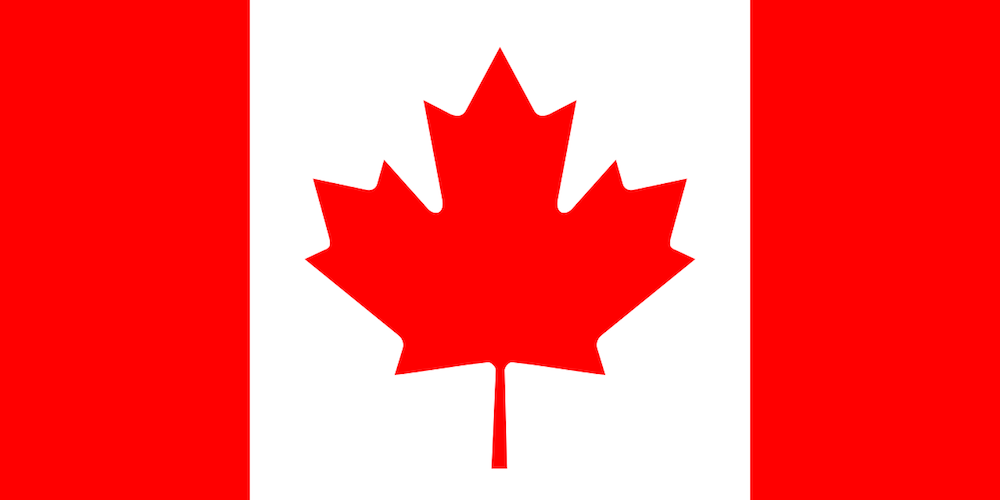
News that Ontario would not pass legislation in time for Canada Day barely caused a ripple in mainstream media. Aside from Hicken’s dogged reporting on this file, a tweet or two and a few threads on various Facebook pages, the news was lost in the big stories of the day, not the least of which is our current COVID-19 situation (understandably, we have much bigger issues to worry about these days). Even the Ontario government reported nothing on it.
Inside the wine industry, however, there is great concern and a will to resolve this long-standing, and I dare say, ridiculous issue of having the simple right to buy wines from other provinces without big brother standing in the way. As one Ontario winery owner told me: “I want people to drink more Canadian wines. I want premium wines to be available across Canada.” The owner, who asked that his identity not be disclosed and has no skin in the game can already sell wines in B.C., but feels strongly that it should be a two-way street in every jurisdiction in the country. He can’t understand why there is opposition within government to not make this happen.

Del Rollo, above, vice president of industry and government relations at Arterra Wines Canada, which owns dozens wineries across Canada, told Wines In Niagara: “We have been asking government to fix interprovincial trade for years.” Rollo is also on the board of Wine Growers Canada and is the current chair of Wine Growers Ontario. “I am not aware of any domestic organization that is lobbying against this,” he said.
Rollo believed legislation would make its way through this year but “COVID has really delayed progress on this issue in particular. My understanding is that the provinces continue to meet on this issue and, in my conversations with government, there is a will to achieve this.”
He says it’s crucial that both Quebec and Alberta open as well if it’s to be meaningful for our industry in Ontario and B.C.
“A rising tide floats all boats in the harbour,” he says, and adds it’s the smaller wineries that will benefit from open borders. “I see this as an opportunity for small wineries to move that extra case.”
In one way, says Rollo, passing legislation now would have been ideal because “COVID has forced people to buy online. If ever there was a time (to pass legislation), it’s now.” But, ironically, it’s COVID that just might have gotten in the way of delaying any movement for the next year.

Richard Linley, above, president of Ontario Craft Wineries, also says any agreement with Ontario opening up its borders should be coupled with Quebec doing the same thing. “It’s really important that any model comes with accompanying agreement with Quebec so Ontario wineries can ship VQA wine directly to Quebec customers (with a reciprocal ability for Quebec wineries to ship 100 percent domestic wines to Ontario and the rest of Canada).”
Linley says his industry association, which includes most wineries in Ontario, wants the borders opened up.
“The OCW is strongly in favour of opening up interprovincial trade for VQA wine made from 100 percent domestic grapes,” he told Wines In Niagara. “This is especially true now as Ontario wineries are hurting financially and have become more dependent on the e-commerce sales channel as a result of COVID-19. Moreover, consumers deserve more choice and convenience. The current system is a relic of the past and all Canadians should be able to better access Canadian wines across our country.”
Of that we can all agree. At least, ALMOST all of us.
Niagara wines shine at
Vintages release Saturday
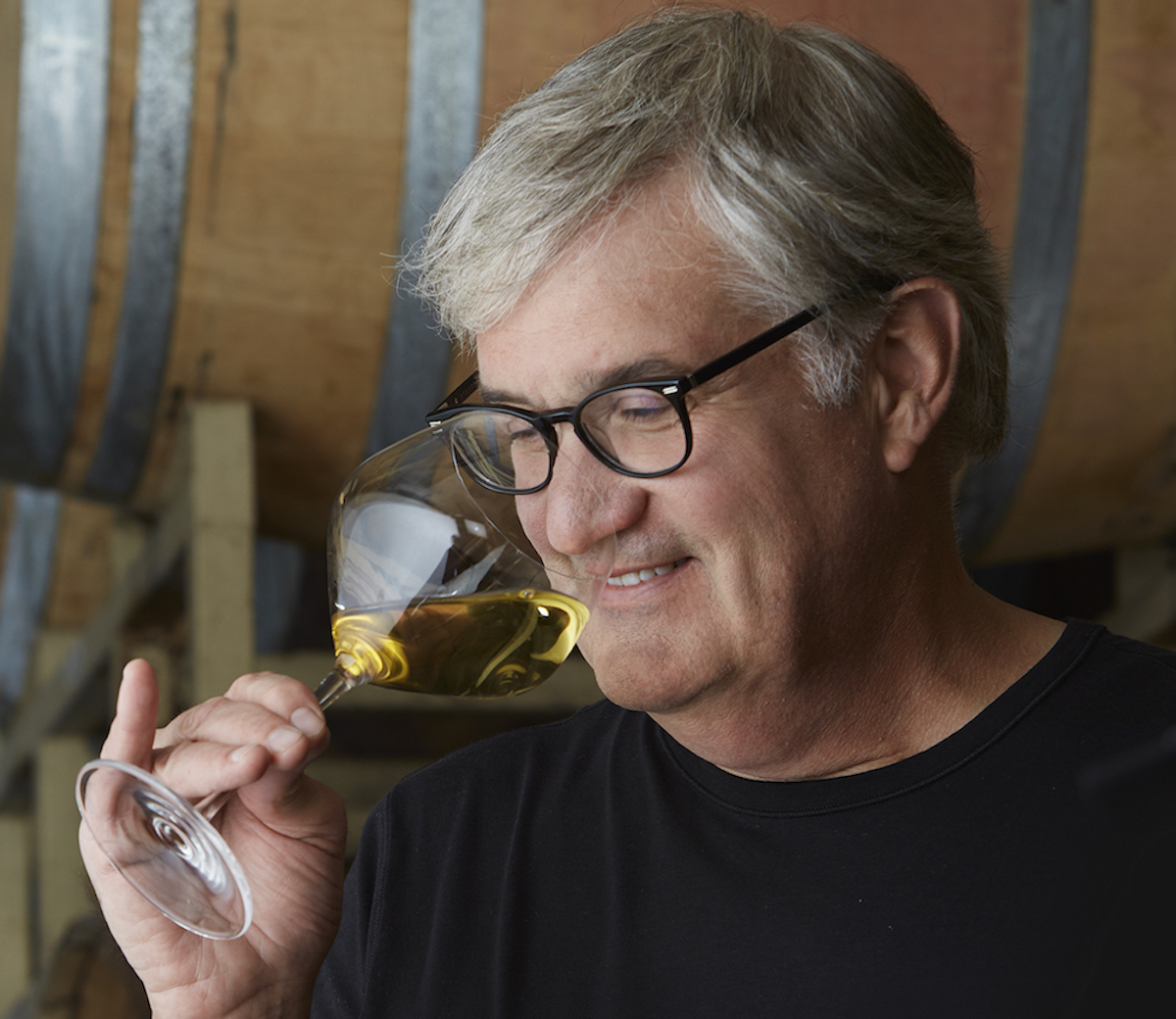
Here are the Niagara wines we can recommend from the Vintages release this Saturday:

Le Clos Jordanne Le Grand Clos Chardonnay 2017 ($45, 93 points) — The Chardonnay for this reborn label by Arterra Canada is whole-cluster pressed and wild fermented in tanks with the barely fermenting juice transferred to 228L French oak barrels to complete the fermentation. The wine is aged in barrels (no more than 20% of the barrels are new oak) for 16 to 18 months, racked and left to settle in tank for a month and filtered prior to bottling. The wines are aged a further eight months and bottled. This has a highly perfumed nose with notes of pear, quince, elegant and subtle spice, profound limestone minerally and freshening waves of salinity. While it’s tight and still rounding into form on the nose, it opens up beautifully on the palate with persistent and generous stone fruits, complexity and depth, barrel spice notes working in harmony with the pear/apple fruit, pristine river-rock minerality, lemon peel, integrated oak spices and a long, vibrant, intense finish. This is a terroir-driven Chardonnay you should cellar and watch grow as the acidity melts into the fruit and the minerality has a chance to strut its stuff. Made by the label’s original winemaker Thomas Bachelder, above.

Leaning Post The Fifty Chardonnay 2018 ($23, 91 points) — Sourced from fruit grown on the Twenty Mile Bench, this version of The Fifty was barrel fermented but aged in stainless steel. The nose shows bright apple, pear, peach, stony minerality and some creaminess. It has a lovely creamy texture on the palate with rich pear, apple and citrus accents with subtle, underlying spice notes through a vibrant finish. Great value here.

Creekside Laura’s Red 2016 ($25, 90 points) — This classic from Creekside uses the typical Bordeaux varietals and adds Syrah to the mix. With the hot 2016 vintage, winemaker Rob Power uses a bit more Merlot and Syrah to keep the tannins in check and smooth out the rough edges. It’s a beauty and quite a bargain at $22. Look for dark cherries, brambly raspberries, currants, cedar, savoury notes and barrel spices. This is nicely structured on the palate and built to improve in your cellar with firm tannins and enough red and dark fruits to keep it humming for three+ years. A bloody good wine from an outstanding vintage at a great price.

Sue-Ann Staff Fancy Farm Girl Foxy Pink Rosé 2018 ($16) — 92% Riesling, 8% Cabernet Franc with a vibrant nose of lime, citrus, apple and cranberries in a dry, fresh style. Note: No score given as this was tasted among a large group of wines for a different purpose other than scoring.
• 13th Street Cabernet Merlot 2018 ($20)
• Megalomaniac Pink Slip Rosé 2018 ($20)
• Trius Showcase Wild Ferment Chardonnay 2017 ($37)
• Adamo Estate Sogno Unoaked Chardonnay 2019 ($17)
• Lakeview Cellars Fumé Blanc 2017 ($20)
Two new Rosés from
Vineland Estate
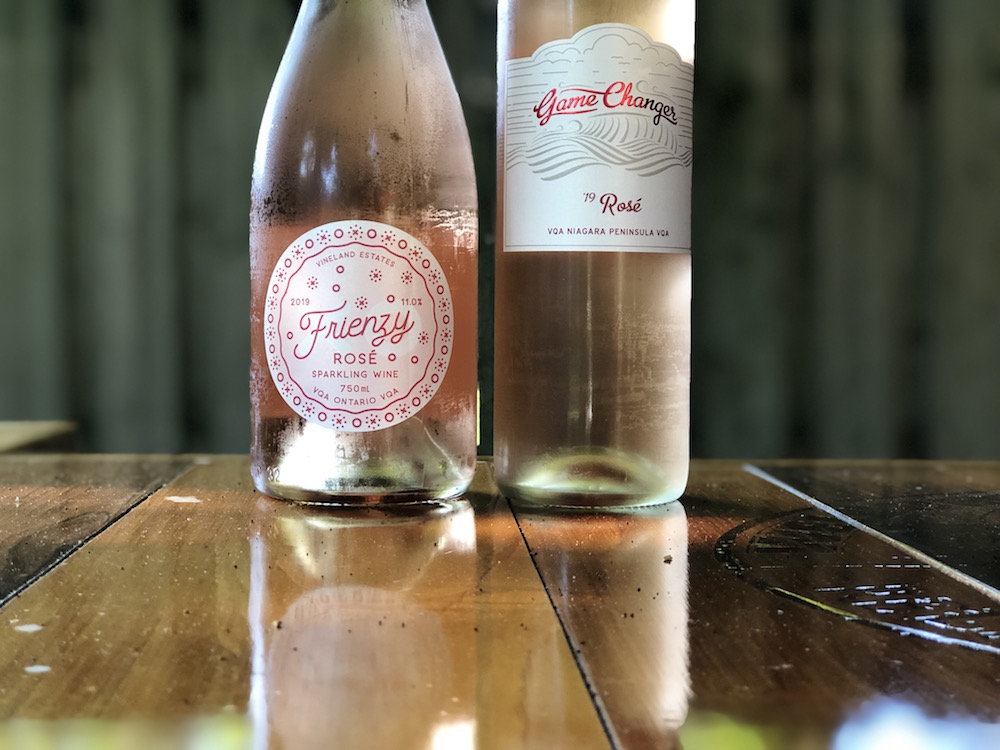
Vineland Estate Game Changer Rosé 2019 ($17, 89 points) — The blend for the Game Changer rosé is 46% Cabernet Franc, 34% Cabernet Sauvignon, and 20% Riesling. Similar pale salmon colour as the bubbly above with a nose of summery red berries, watermelon and citrus accents. It’s juicy and expressive on the palate with a range of strawberries, raspberries, light herbs and lemon freshness on a fairly dry and refreshing finish. $1 from each Game Changer wine sale is donated/given to local charities that positively impact the lives of the people in Niagara.
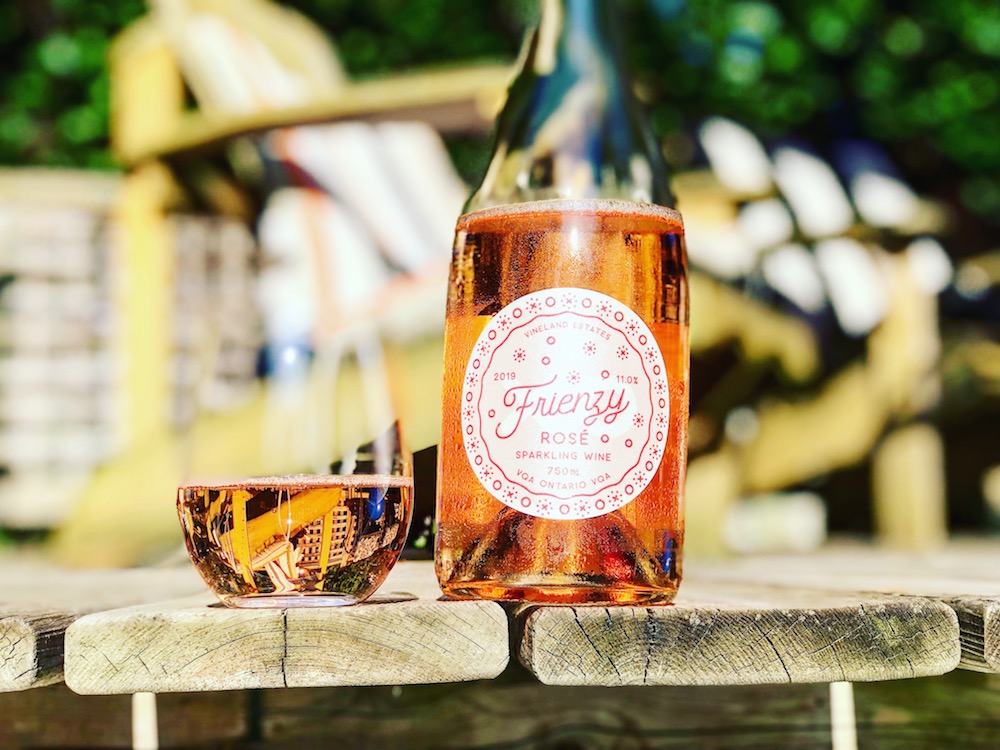
Vineland Estate Frienzy Sparkling Rosé 2019 ($20, 90 points) — The blend for this delightful sparkling rosé is 59% Cabernet Franc and 41% Cabernet Sauvignon. It’s a charmat style bubbly that pours a pale salmon colour in the glass with a lively effervescent mouse and aromas of fresh-picked raspberries, black cherries and black currants. It has a touch of sweetness on the palate but nicely balanced by the juicy acidity and ripe berries that shine though a vibrant finish. At only 11% abv, this is a guilt-free summer staple perfect for the porch, pool, beach or cottage.



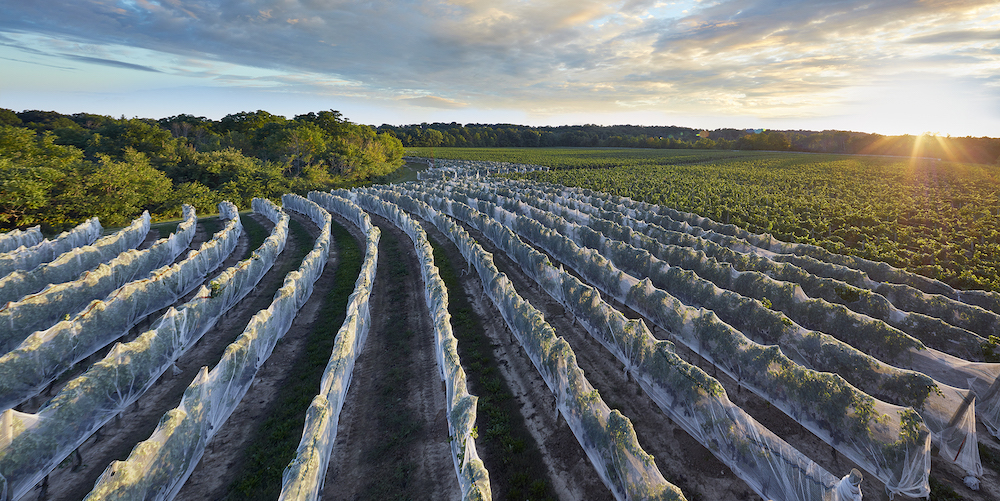



Comment here